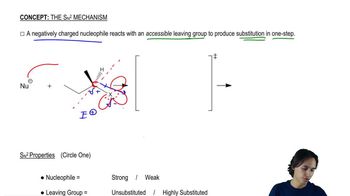Would you expect the following bases to favor E1 or E2 elimination?
(c)
 Verified step by step guidance
Verified step by step guidance Verified video answer for a similar problem:
Verified video answer for a similar problem:



 6:21m
6:21mMaster Understanding the difference between basicity and nucleophilicity. with a bite sized video explanation from Johnny
Start learning